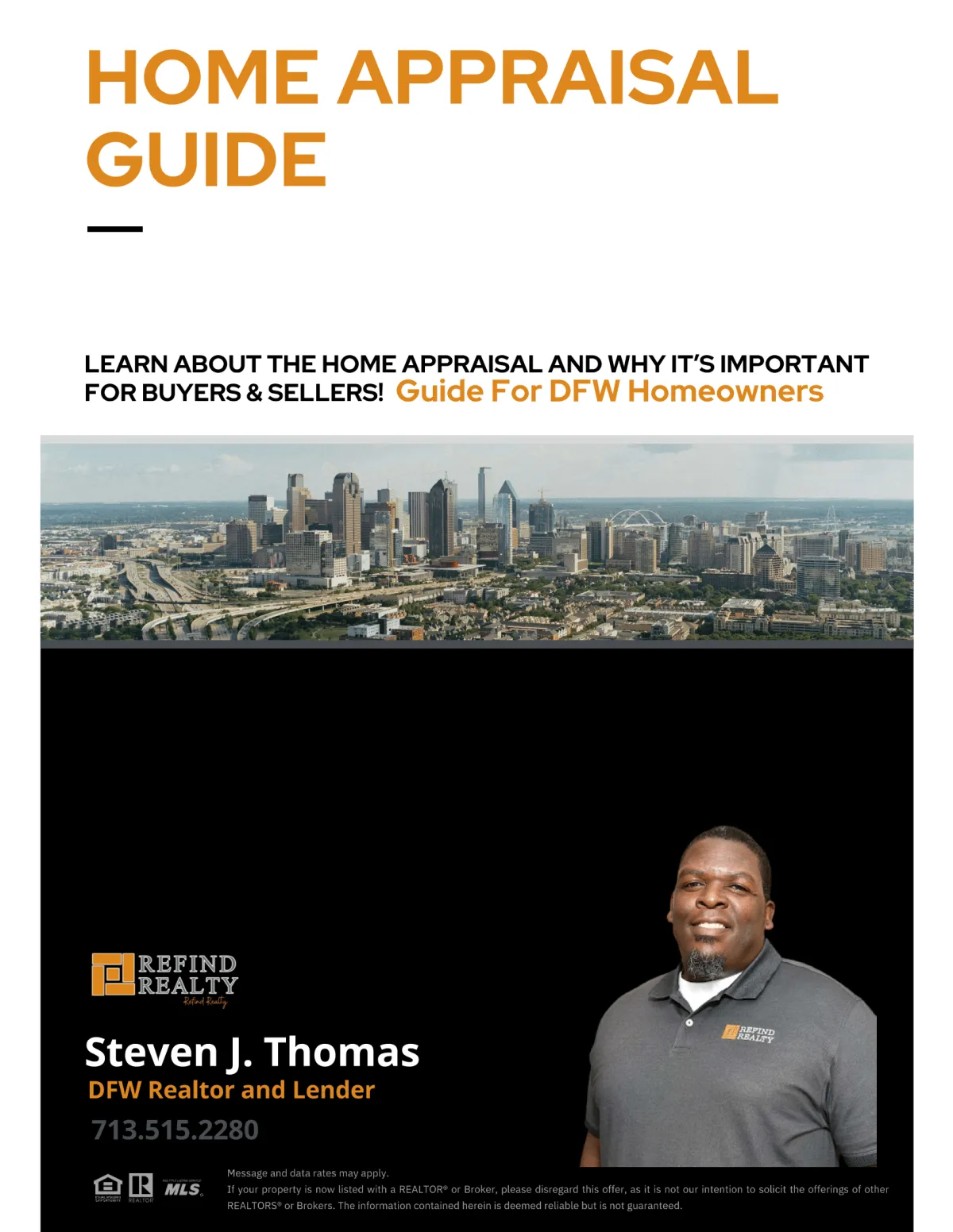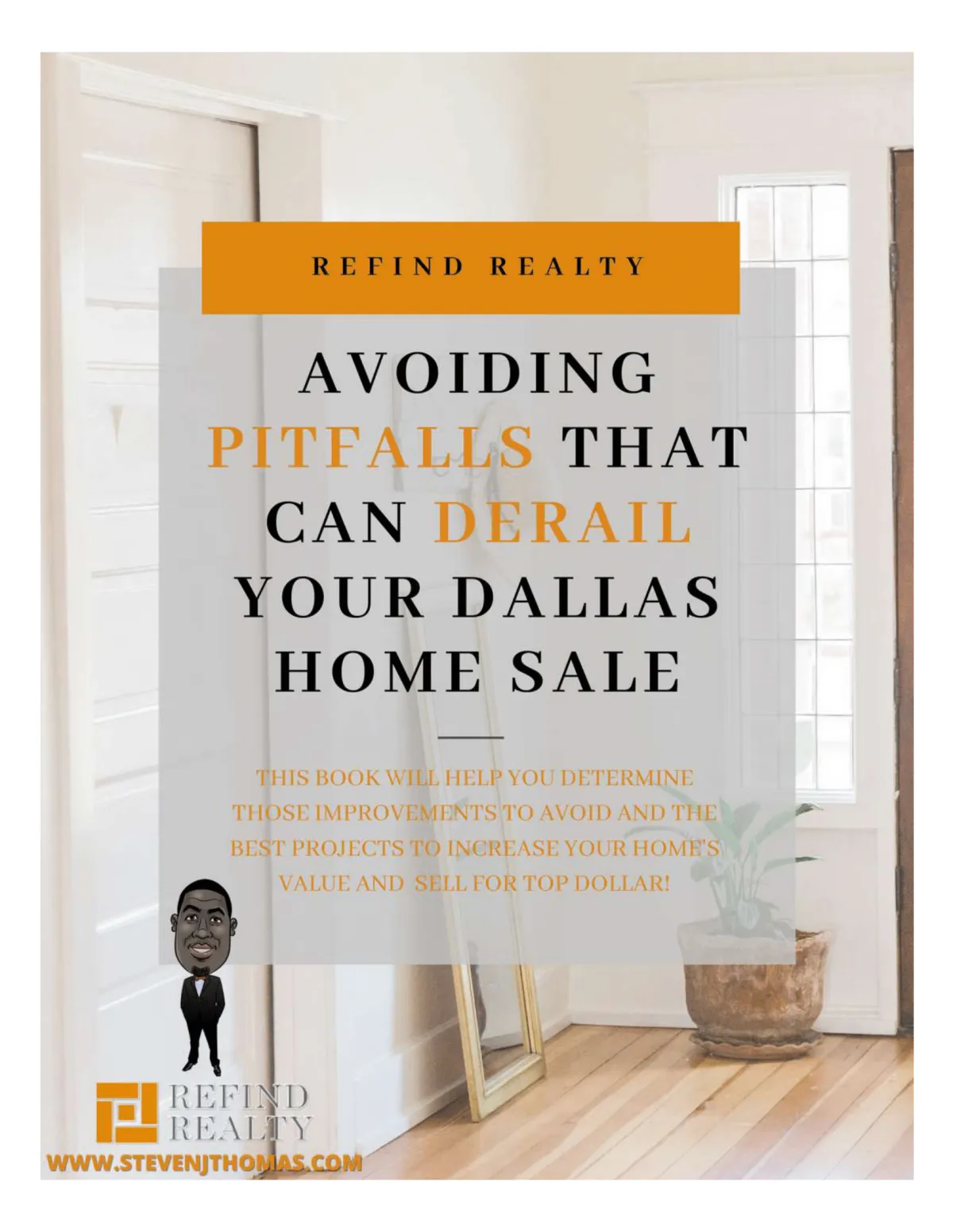You're Always At Home With Refind Realty.
Serving Your DFW Real Estate Needs Since 2005.
We Help You Buy and Sell in The Greater Dallas-Fort Worth Area.
Check Out Our Social Media Channels!
Buying in DFW
Buying your first or next home should be a rewarding and exciting time in your life, and one that you look back on with fond memories.
Thinking Of selling?
The market has changed a lot and I'd love to show you the exact strategy I use to get sellers in DFW top dollar for their property.
Get Pre-Approved
Let me walk you through the entire pre-approval process so you know exactly how much home you can afford.
Sign Up For my
Email List
My emails are a great way to stay up-to-date with local news and real estate market trends, even if you're not currently in the market. So, come on and join me to stay in the loop!
affordability Calculator
Get pre-approved to know exactly how much house you can afford. Use this calculator to get a quick estimate. Contact me for assistance!
DFW New Construction
Discover the latest new home constructions in DFW and take advantage of the builder incentives that are available now.


Owned and Operated by Thomas & Thomas Financial Group, LLC
Let's Make Your real estate Dreams Come True.
Newest Listings
Call Me Today At (713) 505-2280

Refind Realty Blog:


How to Negotiate With the Builder on Closing Costs in Dallas
How to Negotiate With the Builder on Closing Costs in Dallas
By Steven J. Thomas

Direct Answer
Yes — you can negotiate closing costs with Dallas–Fort Worth builders, even when incentives are advertised as “non-negotiable.”
The key is understanding where builders have flexibility (lender choice, title fees, design credits) and when to negotiate (timing, inventory phase, or quarter-end).
Done right, you can save $5,000–$20,000 or more on your closing table — without affecting the home price or appraisal.
What “Builder Closing Costs” Really Mean
When builders say they’ll “pay your closing costs,” they’re typically referring to credits toward lender, title, or prepaid fees — not a full waiver.
These incentives often depend on:
Using the builder’s preferred lender or title company
Closing within a specific timeframe
Purchasing a spec or inventory home (already built)
Understanding these terms lets you negotiate strategically instead of emotionally.
1. Know Where Builders Have Flexibility
Builders operate differently from individual sellers. They focus on sales velocity, not one-off profit per deal.
Here’s where they usually have room to negotiate:
Negotiable ItemTypical RangeNotesClosing Cost Credit$5,000–$20,000More common on move-in-ready homesRate Buydown1–3 pointsCan lower payment more than price reductionTitle & Escrow FeesUp to full coverageWhen using builder’s title companyDesign Center Allowance$2,000–$10,000Offered to close gaps in perceived valueAppliances or UpgradesVariableOften easier to approve than cash credits
💡 Tip: Builders are more likely to enhance incentives near the end of a sales quarter or when they’re clearing completed inventory.
2. Compare Builder Lender vs. Outside Financing
Most DFW builders partner with “preferred lenders” who bundle credits into their financing structure.
Always get two quotes:
The builder’s lender offer (with all incentives).
An outside lender’s offer (total cash-to-close and monthly payment).
Even if the outside lender offers a better rate, you can use that quote to negotiate stronger concessions from the builder’s lender.
📄 Start the process here: Get Pre-Approved
3. Leverage Market Timing
Builder motivation shifts throughout the year.
You’ll find the strongest negotiating power:
End of fiscal quarters: March, June, September, December.
When a phase is nearly complete: Builders want uniform price points before moving to the next phase.
On standing inventory homes: Each month they sit unsold costs the builder in interest and taxes.
🧭 Pro Tip: Monitor new construction inventory through the Lone Star Living App to find homes likely to qualify for larger incentives.
4. Bundle Your Negotiations
Instead of asking only for a closing cost credit, combine requests for better results:
“If we close in 30 days using your lender, could we receive a rate buydown and full title coverage?”
This structure makes it easier for sales managers to approve because you’re helping them meet their closing timeline while improving your affordability.
5. Understand Builder Priorities
Negotiations work best when you know what motivates the other side. Builders often care more about:
Closing volume by deadline
Maintaining price integrity (they prefer credits over discounts)
Reducing unsold inventory
Customer satisfaction ratings
When you align your offer with their priorities — for example, flexible closing or quick approval — they’re more willing to add financial incentives.
6. Use an Agent Who Knows Builder Economics
Builders employ professional sales reps trained to protect their margins. Having an experienced buyer’s agent who understands builder pricing, lending relationships, and incentive patterns levels the playing field.
At Refind Realty DFW, I track:
Active incentive sheets across top DFW builders
Phase-by-phase inventory data
Seasonal credit trends and lender flexibility
That’s how I help buyers structure offers that win — without overpaying or losing leverage.
7. Don’t Overlook Small Negotiables
In addition to closing cost credits, you can often negotiate:
Extended rate locks if your build is delayed
Free upgrades on flooring, lighting, or hardware
Landscape or fencing completion before closing
HOA initiation fee coverage
These items may not be advertised, but they add real dollar value at closing.
Example: The Frisco Buyer Win
A family in Frisco purchased a $640K new build.
The builder’s published offer was $10K toward closing costs.
By comparing lender options and timing their offer for quarter-end, we negotiated:
$15K total closing cost credit
2-point temporary rate buydown
Free refrigerator and blinds package
Net savings: over $23,000 — without lowering the contract price.
Conclusion
Negotiating builder closing costs in Dallas isn’t about confrontation — it’s about understanding leverage, timing, and the right structure.
Builders expect savvy buyers to ask — and when done professionally, both sides win.
Before touring your next community, get pre-approved, know your comparison points, and bring an agent who understands builder incentives from the inside out.
📈 Get Pre-Approved
🏘️ Explore DFW New Construction Homes
💬 Book a Home Goals Consultation
Key Takeaways
Builders have flexibility in credits, buydowns, and title costs.
Compare preferred-lender offers with outside quotes.
Negotiate near quarter-end or on standing inventory.
Bundle incentives for stronger approvals.
Work with an agent who knows builder patterns and lending economics.
Stay Informed With My Downloadable
Buyer and Seller guides

6 Smart Ways to Build Home Equity

7 Insider Secrets To Selling Your Home w/o a Lot of Time or Money

DFW Home Seller Negotiation Secrets

Home Appraisals Guide

Avoiding Pitfalls That Can Derail Your Home's Sale

Ultimate Guide To Buying a Home

A First Time Homebuyers Guide In DFW

Are You Ready To Buy?

25 Insider Secrets To Buying A Home

How to Improve Your Credit
Download All My Guides For Free


Owned and Operated by Thomas & Thomas Financial Group, LLC
Steven J. Thomas
Steven J. Thomas has been in the financial services industry for the past 19 years and started my career as a Financial Planner for American Express Financial Advisors. I entered into banking with JP Morgan Chase as personal banker in 2003 and was promoted several times up to Small Business Specialist. I earned multiple Million Dollar Club awards and was ranked in the top 5 Small Business Specialist before I branched out in 2005 to start my own Financial Management Company. I ran a successful company before family circumstances lead me to Wachovia Bank in 2008 where I worked as a Senior Financial Specialist. As a Sr. Financial Specialist; I was responsible for the P & L and revenue growth of my banking center. The elimination of my role thru a bank merger lead me to BBVA Compass. I have held various leadership roles at BBVA Compass including Personal Relationship Manager, Branch Retail Executive, Workplace Solutions VP, and his current role as a Retail Manager. As the Regional Workplace Solutions VP, I was responsible for the strategic, tactical, and execution of Partnership Banking relationships, promotion and activity with corporate and non-profit companies in my footprint. I was responsible for the acquisition production for three districts, which includes 51 banking centers and over 300 employees. In May of 2014, I joined the team at Refind Realty and became one of the managing partners in mid-2015.

Wondering What Your DFW Home Could Be Worth in 2025?
Get a Professional Home Valuation From A Local Market Expert
Unlock insights into potential selling prices.
Get a personalized analysis sent directly to your inbox.
Stay ahead with updates on property value fluctuations.
Benchmark your property against neighborhood listings.
Get a FREE Home Valuation And Potential Net Sheet:


I used this realtor and it was a great experience. He was patient and very helpful with our journey. He also helped us find a great lender with little hassle on the process, also got us approved for well above the market of our original home so we were able to get more house with a lower mortgage rate. So to anyone who is interested in buying a home take my advice give Steven a call. It’s worth it 😁
Bryant Loring


Steve was absolutely amazing! Everything was easy! Very professional in all aspects. Punctual, responsive, and diligent. He goes above and beyond to ensure you get to see as many homes as you’d like no matter the location. Not only was he knowledgeable about home buying, he also has a resourceful network for new home owner needs. I recommend Refind Realty to everyone!
Nicholas Bishop


I definitely recommend Steven to assist with your home buying needs. As a first time home buyer the process can be overwhelming, but as my realtor he was knowledgeable & patient while addressing my concerns and assisting me with my new home purchase. Thanks again Steven!! :-)
Gayle Mason

Ask Us Anything
Frequently Asked Questions
Why do you need a Realtor?
When buying or selling a home, there are so many options…which can also present a lot of obstacles. Laws change, forms change, and practices change all the time in the real estate industry. Because it’s our job to stay on top of those things, hiring a realtor reduces risk, and can also save you a lot of money in the long run.
When you work with me as your Realtor, you’re getting an expert who knows the area; knows how to skillfully guide your experience as a seller or buyer; can easily spot the difference between a good deal and a great deal. My job is to translate your dream into a real estate reality, and I work hard to earn and keep my business. This also means earning your trust: When you work with me, you’ll be working with a realtor who looks out for your best interests and is invested in your goals.
Which loan should you choose?
There are two different types of loans conventional loans and government-backed loans. The main difference is who insures these loans:
1 - Government-backed loans (FHA, VA and USDA):
(a) - Are, unsurprisingly, backed by the government.
(b) - Include FHA loans, VA loans, and USDA loans.
(c) - Make up less than 40 percent of the home loans generated in the U.S. each year.
2 - Conventional loans
(a) - Are not backed by the government.
(b) - Include conforming and non-conforming loans (such as jumbo loans).
(c) - Make up more than 60 percent of the loans generated in the U.S. each year.
What is the difference between FHA, VA and USDA loans?
1 - FHA LOANS:
FHA loans, which are insured by the Federal Housing Administration, are typically designed to meet the needs of first-time homebuyers with low or moderate incomes. FHA loans can be approved with a down payment of as little as 3.5 percent and a credit score as low as 580.
FHA loans are often called “helper loans,” because they give a leg up to potential borrowers who may not be able to secure one otherwise. For this reason, FHA loans have maximum lending limits, which are determined based on housing values for the county where the for-sale home is located.
Because the agency is taking on more risk by insuring FHA loans, the borrower is expected to pay mortgage insurance both at the time of closing and on a monthly basis, and the property must be owner-occupied.
2 - VA LOANS:
VA loans are backed by the Department of Veterans Affairs and they are guaranteed to qualified veterans and active-duty personnel and their spouses. VA loans can be approved with 100 percent financing, meaning VA borrowers are not required to make a down payment.
Unlike FHA loans, borrowers do not have to pay mortgage insurance on VA loans.
3 - USDA LOANS:
You may also hear about USDA loans, which are backed by the United States Department of Agriculture mortgage program. USDA loans are intended to support homeowners who purchase homes in rural and some suburban areas. USDA loans do not require a down payment and may offer lower interest rates; borrowers may have to pay a small mortgage insurance premium in order to offset the lender’s risk.
What’s a conventional loan? Understanding what it means to be conforming and non-conforming
Buyers who have a more established credit history and a larger down payment may prefer to apply for a conventional loan. These loans may offer a lower interest rate and only require the home buyer to purchase monthly mortgage insurance while the loan-to-value ratio is above a certain percentage, so a conventional loan borrower can typically save money in the long run.
Conventional loans are divided into two types: Conforming loans and non-conforming loans.
1 - CONFORMING LOANS:
Conforming loans are those that meet (or conform to) predetermined standards set by Fannie Mae and Freddie Mac — two government-sponsored institutions that buy and sell mortgages on the secondary market. By selling the loans to "Fannie and Freddie," lenders can free up their capital and return to issue more mortgages than if they had to personally back every loan that they approve.
The main standard for conforming loans is that the amount borrowed must be under a certain amount; in Alaska, a single-family home loan must be under $647,200 in order to be considered conforming.
Properties with more than one unit have higher limits.
2 - NON-CONFORMING (JUMBO) LOANS:
But what happens if a borrower wants to borrow more than the Freddie- and Fannie-approved loan amount? In this case, they would have to apply for a “jumbo loan,” which is the most common type of non-conforming loan.
Because the lender cannot resell the jumbo loan (or any non-conforming loan) to Freddie Mac or Fannie Mae, jumbo loans are considered to be riskier than a conforming loan. To protect against this risk, the bank will typically require a higher down payment; the interest rate on a jumbo loan may also be higher than if the same borrower applied for a conforming loan.
What kind of rate should you choose?
Rate types: Fixed-rate vs. adjustable-rate mortgages.
In addition to the loan type you choose, you’ll also have to determine if you want a fixed-rate mortgage or an adjustable-rate mortgage (ARM). A fixed-rate mortgage has an interest rate that does not change for the life of the loan, so it provides predictable monthly payments of principal and interest.
An adjustable-rate mortgage typically offers an initial introductory period with a low-interest rate. Once this period is over, the interest rate adjusts periodically, based on the market index. The initial interest rate on an ARM can sometimes be locked in for different periods, such as one, three, five, seven, or 10 years. Once the introductory period is over, the interest rate typically readjusts annually.
Office 1229 E. Pleasant Run Ste 224, DeSoto TX 75115
Call :(713) 505-2280
Email: [email protected]
Site: www.stevenjthomas.com

Facebook
Instagram
X
LinkedIn
Youtube
TikTok